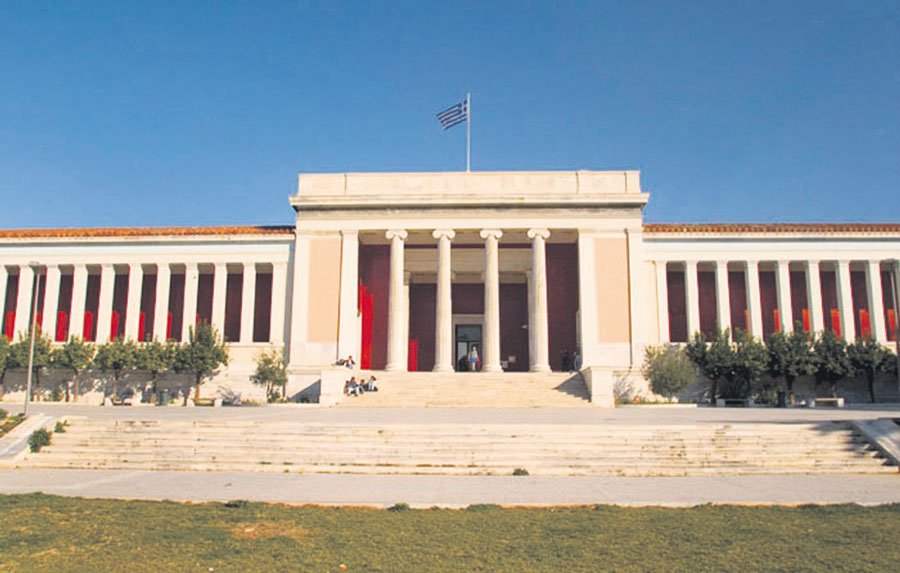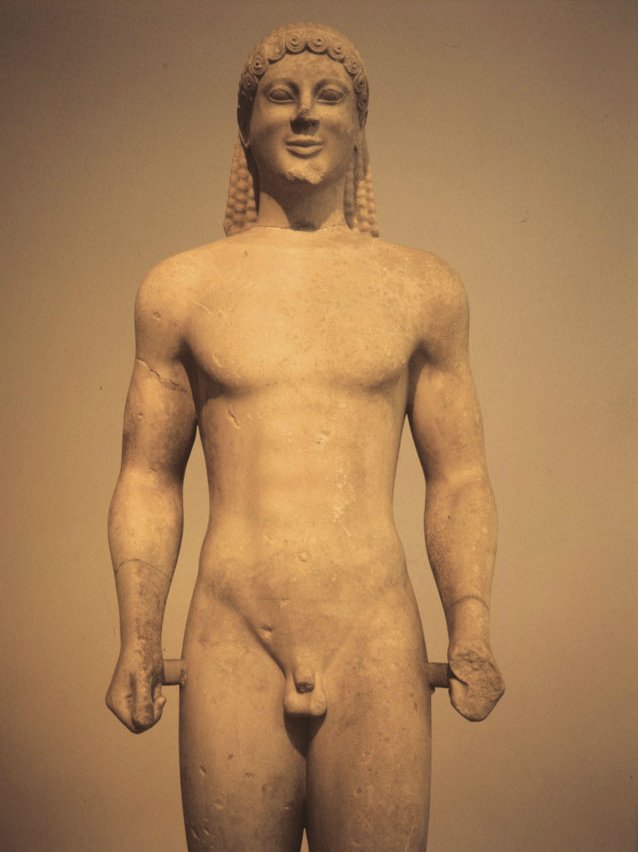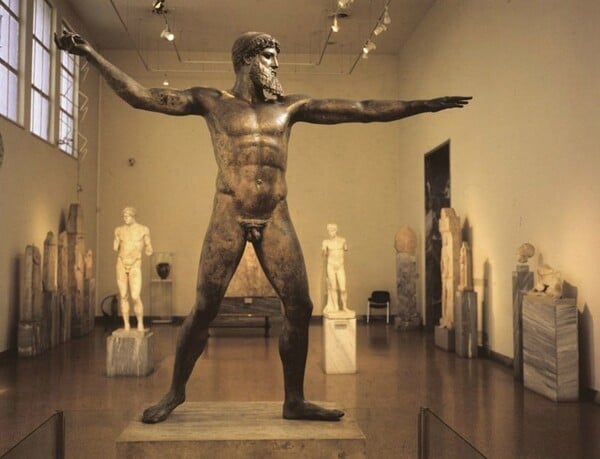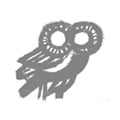Also known as the ugliest part of Athens and the poster child of Athens’s unchecked “development” of previous decades regardless the numerous and unsuccessful efforts to redesign it, Omonia square still offers some informative glances at inner city life. Apart from the magnificent Archaeological museum, the area around Omonia offers little other cultural stimulants and it should be avoided during the night.
Nearby Exarhia though is the exception. It is traditionally considered as the black sheep in a family whose other kid is the adjacent neighbourhood of ultra-chic Kolonaki. Originally, its proximity to the Polytechnic University and the establishment of left-wing party headquarters, attracted students and intellectuals, allowing it to gradually become a hub of the city’s intelligentsia and leftist political parties. Unfortunately in recent times it also became known as a hangout spot for shady characters, due to the establishment of failed anti-drug addiction centres. Nowadays the area is perfectly safe, but its past has allowed it to retain a unique non-conformist character. Its streets are also one of the best open-air graffiti galleries, so take the time to wander around and admire some very artistic creations (Tzavella and Emmanouil Benaki Streets to name a few).
The Archaeological Museum

 After its recent much needed renovation, the Archaeological Museum’s spectacular collection of art which flourished in Greece from the Neolithic times until the age of the Roman Empire, is presented in clearer fashion. The building itself carries a long history behind it. It was constructed in various phases from 1866 until 1939 on plans originally made by Ludwig Lange and remodelled by Ernst Ziller.
After its recent much needed renovation, the Archaeological Museum’s spectacular collection of art which flourished in Greece from the Neolithic times until the age of the Roman Empire, is presented in clearer fashion. The building itself carries a long history behind it. It was constructed in various phases from 1866 until 1939 on plans originally made by Ludwig Lange and remodelled by Ernst Ziller.
Start with the Prehistoric collection, which includes artefacts from the Neolithic, Cycladic and Mycenaean periods, testifying to the long human presence in the area now known as Greece (6,800-3,200 BCE). The clay figurine of a man touching his head with his hand and the voluptuous female figurines are some of the most famous Neolithic findings. As you marvel at the iconic Cycladic figurines in the next chamber, don’t miss the largest surviving female figure from Amorgos Island, as well as the amazing harpist, made from dazzling white marble.
 Continuing with the Mycenaean exhibit, you will be stunned by the spectacular treasures discovered in Mycenae by German legendary archaeologist Heinrich Schliemann. The collection includes stone, bronze and ceramic pots, figurines, ivory and glass objects, as well as golden seals and rings from the vaulted tombs in Mycenae and other parts of the Peloponnese. The delicate golden funerary masks, cups and jewellery, as well as the carved ivory objects found in the royal tombs testify to the sophistication of the artistry, while the Linear B inscriptions provide information on the administrative organisation of the Mycenaean world. In this department you will also see the so-called Mask of Agamemnon, the famous gold mask covering the face of a man found in a tomb in Mycenae, originally thought to be the legendary king Agamemnon.
Continuing with the Mycenaean exhibit, you will be stunned by the spectacular treasures discovered in Mycenae by German legendary archaeologist Heinrich Schliemann. The collection includes stone, bronze and ceramic pots, figurines, ivory and glass objects, as well as golden seals and rings from the vaulted tombs in Mycenae and other parts of the Peloponnese. The delicate golden funerary masks, cups and jewellery, as well as the carved ivory objects found in the royal tombs testify to the sophistication of the artistry, while the Linear B inscriptions provide information on the administrative organisation of the Mycenaean world. In this department you will also see the so-called Mask of Agamemnon, the famous gold mask covering the face of a man found in a tomb in Mycenae, originally thought to be the legendary king Agamemnon.
 Other masterpieces of the Museum are found in the numerous sculpture galleries, where the visitor can trace the development of Greek sculpture from the 7th century BCE to the early Byzantine period. Among other artefacts, you will see the three-metre-tall Kouros from the Temple of Poseidon in Sounio, the bronze two-metre-tall statue of a mystery God (said to be Zeus or Poseidon), and the bronze Hellenistic masterpiece of a young rider on a horse. The Museum also has an inexhaustible collection of vases, pottery, metalwork and small objects which were used in everyday life. Some of the most remarkable examples of fresco painting from the 16th century BCE come from Santorini, inspiring awe with their intricate details and vibrant colours. Some have been transferred to the Archaeological Museum of Santorini, but the Antelope, the Boxing Children and Spring will dazzle you with their vitality and figurativeness.
Other masterpieces of the Museum are found in the numerous sculpture galleries, where the visitor can trace the development of Greek sculpture from the 7th century BCE to the early Byzantine period. Among other artefacts, you will see the three-metre-tall Kouros from the Temple of Poseidon in Sounio, the bronze two-metre-tall statue of a mystery God (said to be Zeus or Poseidon), and the bronze Hellenistic masterpiece of a young rider on a horse. The Museum also has an inexhaustible collection of vases, pottery, metalwork and small objects which were used in everyday life. Some of the most remarkable examples of fresco painting from the 16th century BCE come from Santorini, inspiring awe with their intricate details and vibrant colours. Some have been transferred to the Archaeological Museum of Santorini, but the Antelope, the Boxing Children and Spring will dazzle you with their vitality and figurativeness.
 The Museum recently opened its excellent Egyptian collection, considered the fourth most important in Europe. The collection donated by Ioannis Dimitriou in 1880 and Alexandros Rostovic in 1904. In total, the collection includes more than 6,000 artefacts. The visitor can admire the mummies, nine of which were donated by the Egyptian government in 1893, rare statues, tools, jewels, a wooden body tag for a mummy, a stunning bronze statue of a princess, intact bird eggs and a 3,000-year-old loaf of bread with a bite-sized chunk missing. The exhibition’s centrepiece is a bronze statue of the princess-priestess Takushit, dating to around 670 BCE. Further down there are also some exquisite Fayum funerary portraits, with their characteristic expressive eyes.
The Museum recently opened its excellent Egyptian collection, considered the fourth most important in Europe. The collection donated by Ioannis Dimitriou in 1880 and Alexandros Rostovic in 1904. In total, the collection includes more than 6,000 artefacts. The visitor can admire the mummies, nine of which were donated by the Egyptian government in 1893, rare statues, tools, jewels, a wooden body tag for a mummy, a stunning bronze statue of a princess, intact bird eggs and a 3,000-year-old loaf of bread with a bite-sized chunk missing. The exhibition’s centrepiece is a bronze statue of the princess-priestess Takushit, dating to around 670 BCE. Further down there are also some exquisite Fayum funerary portraits, with their characteristic expressive eyes.
Last but not least, do not miss the collection of donors Antonis and Eleni Stathatos whose artefacts span from the 5th millennium BCE until the post-Byzantine era, and includes mostly pottery and jewellery. In 2009, a Cypriot collection of antiquities was inaugurated in the Museum, comprising of small statues, jewellery, jugs and pottery.
In 2006 and 2007, new important additions were made. The Getty Museum of California returned two important artefacts which were considered to have been looted, after a 10-year-old legal dispute with the Greek government. These are a 4th century BCE golden funerary wreath and a 6th century BCE marble statue of a woman. Previously, Getty had agreed to return a 4th century BCE tombstone from an area near Thebes and a 6th century BCE votive relief from the island of Thasos. All can be admired today in the museum. The museum is presently showcasing a temporary exhibition of The Antikythera Shipwreck (see Must-sees for details).
- 44 Patision Avenue, Tel: +30 213 21448000, 2144856 / Hrs: Mon 13:00-20:00, Tue-Sat 08:00-20:00, Sun 08:00-15:00 / Tickets: €7, free entrance on May 18th, June 5th, last weekend of September / http://www.namuseum.gr / Train: Victoria






























σχόλια